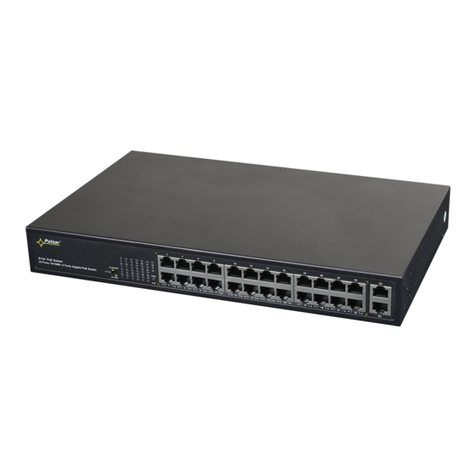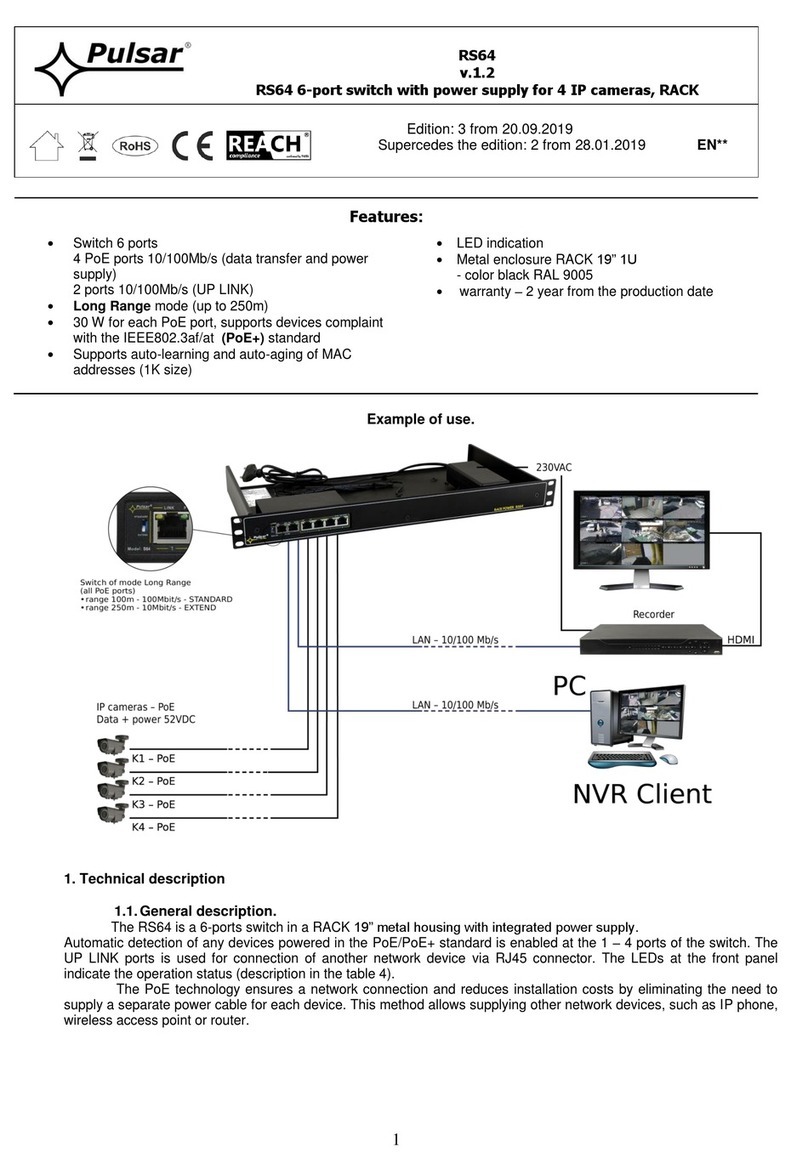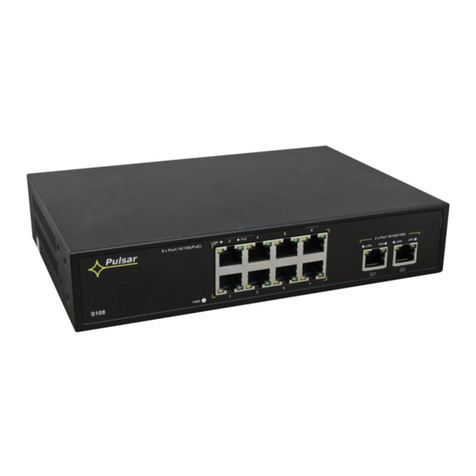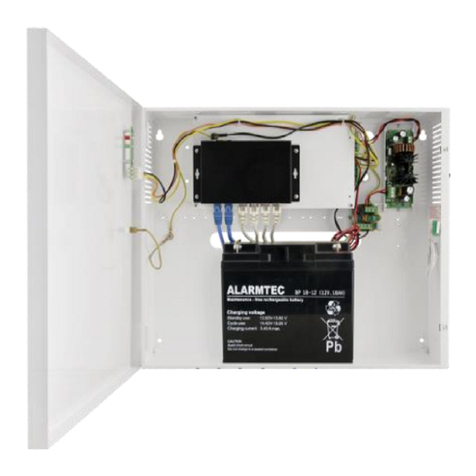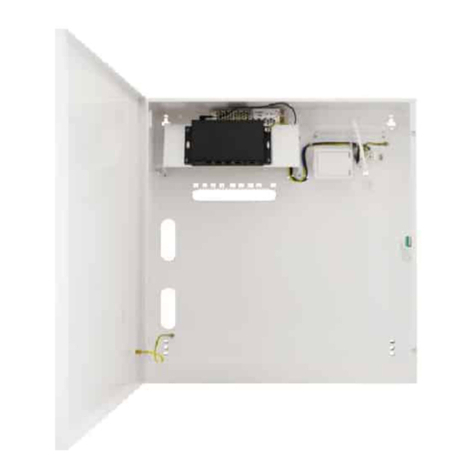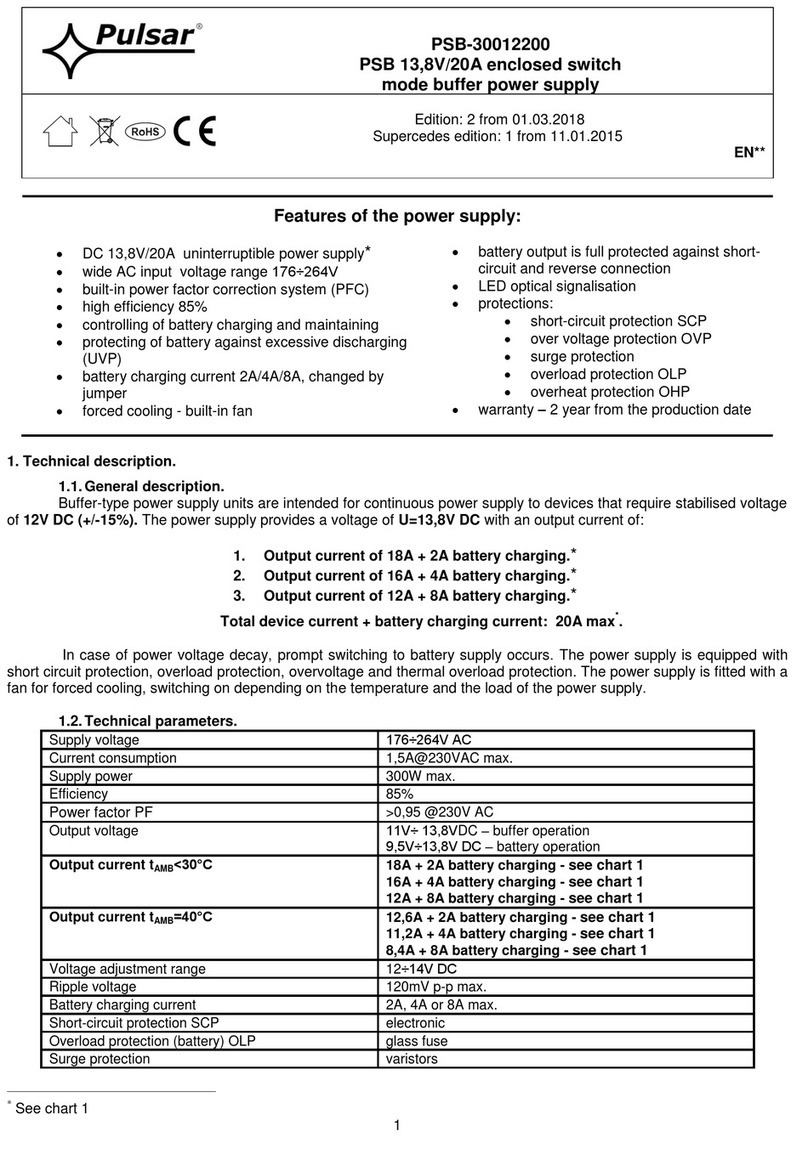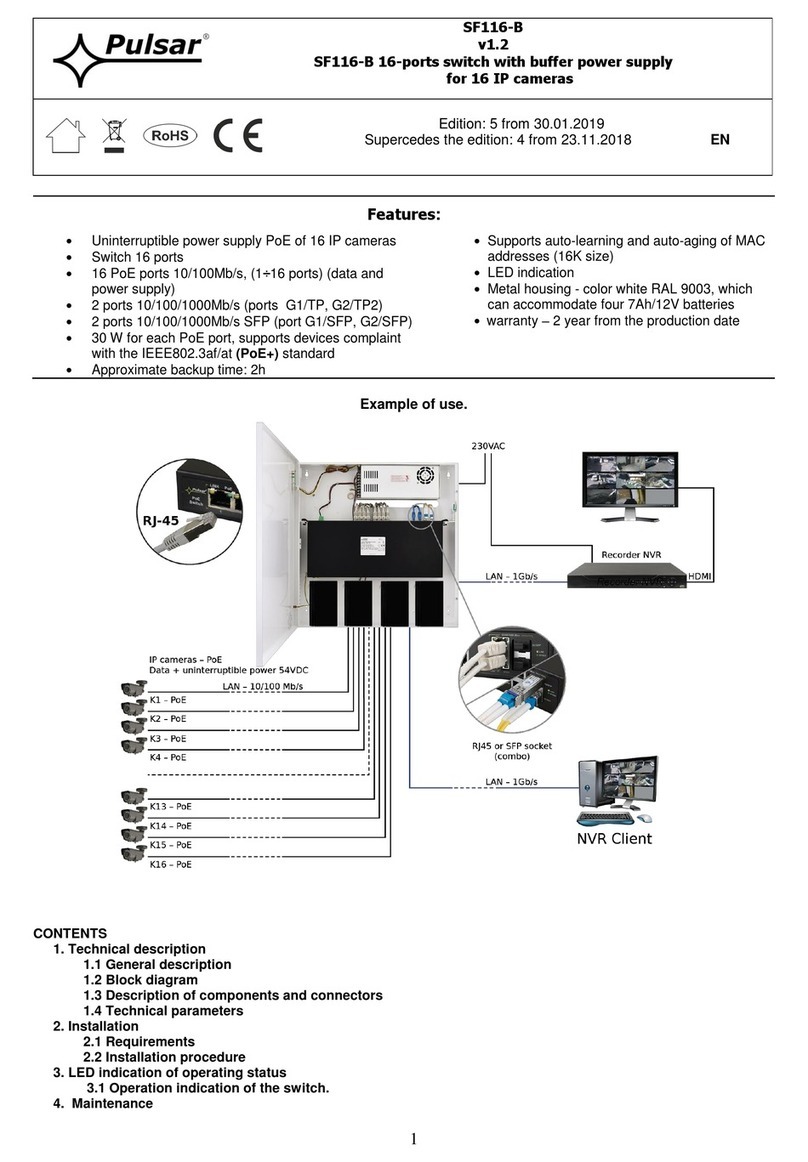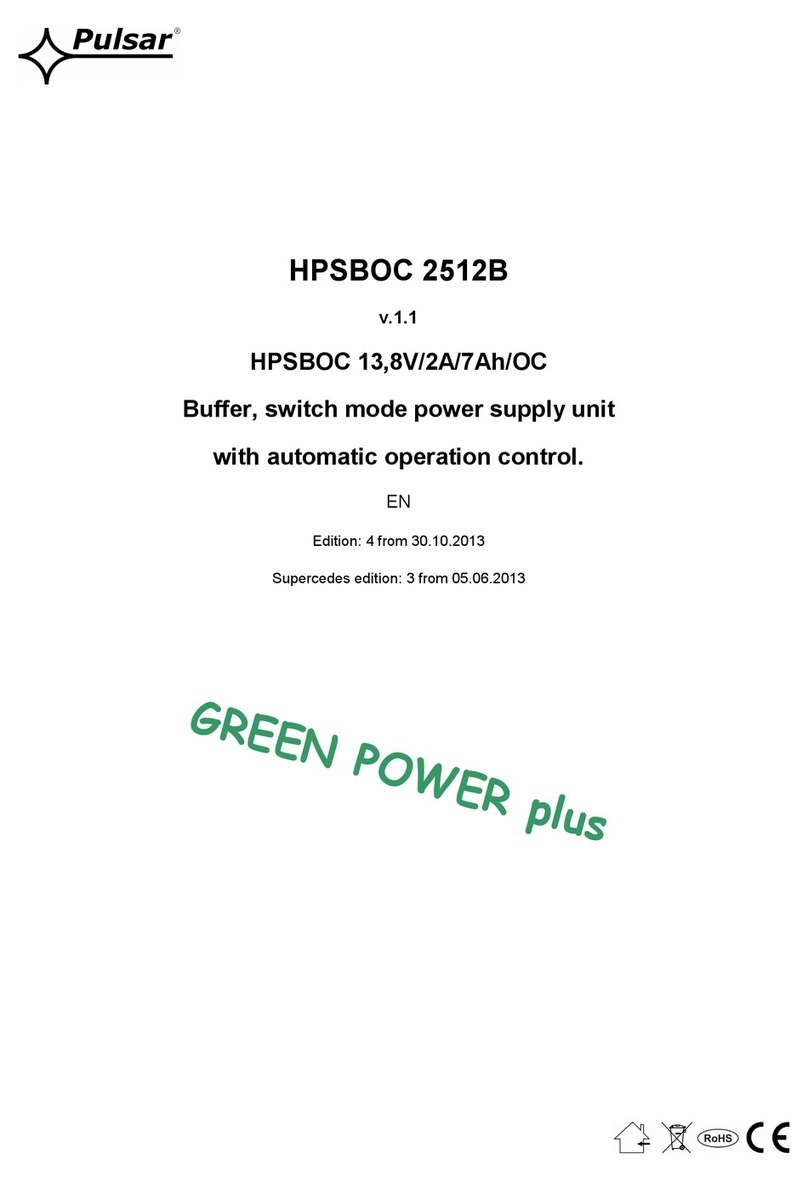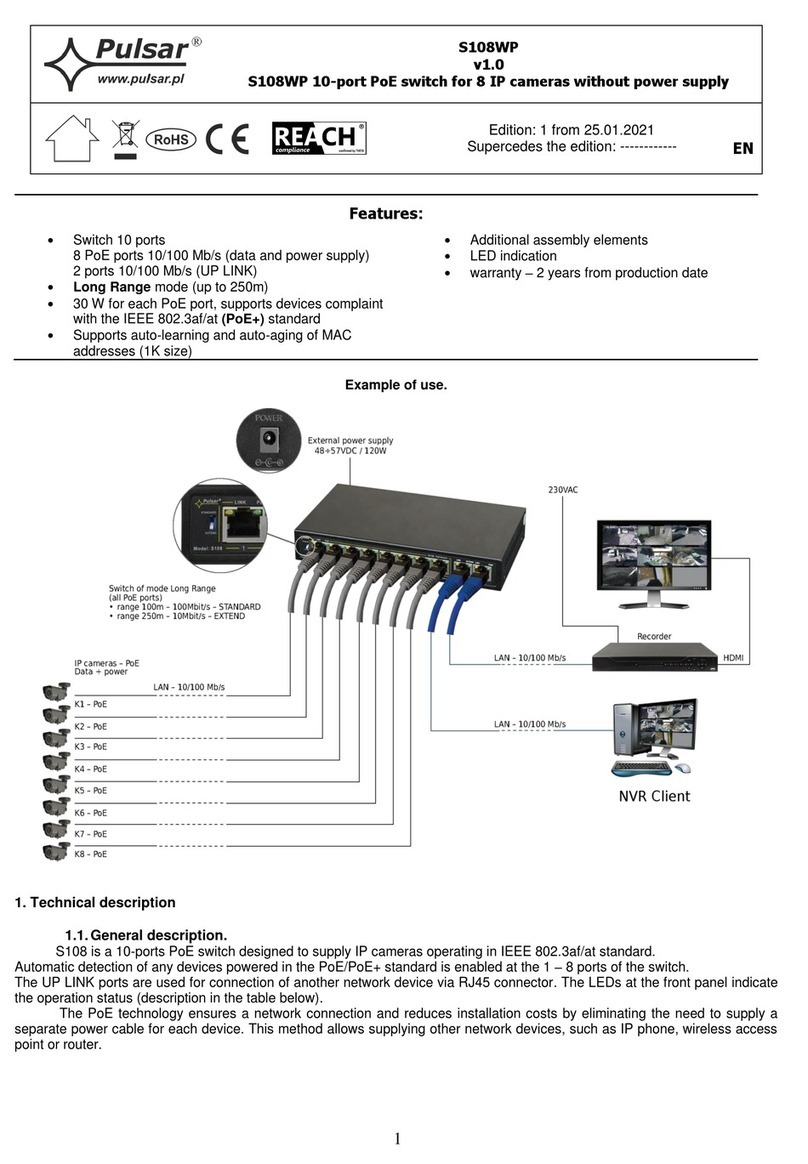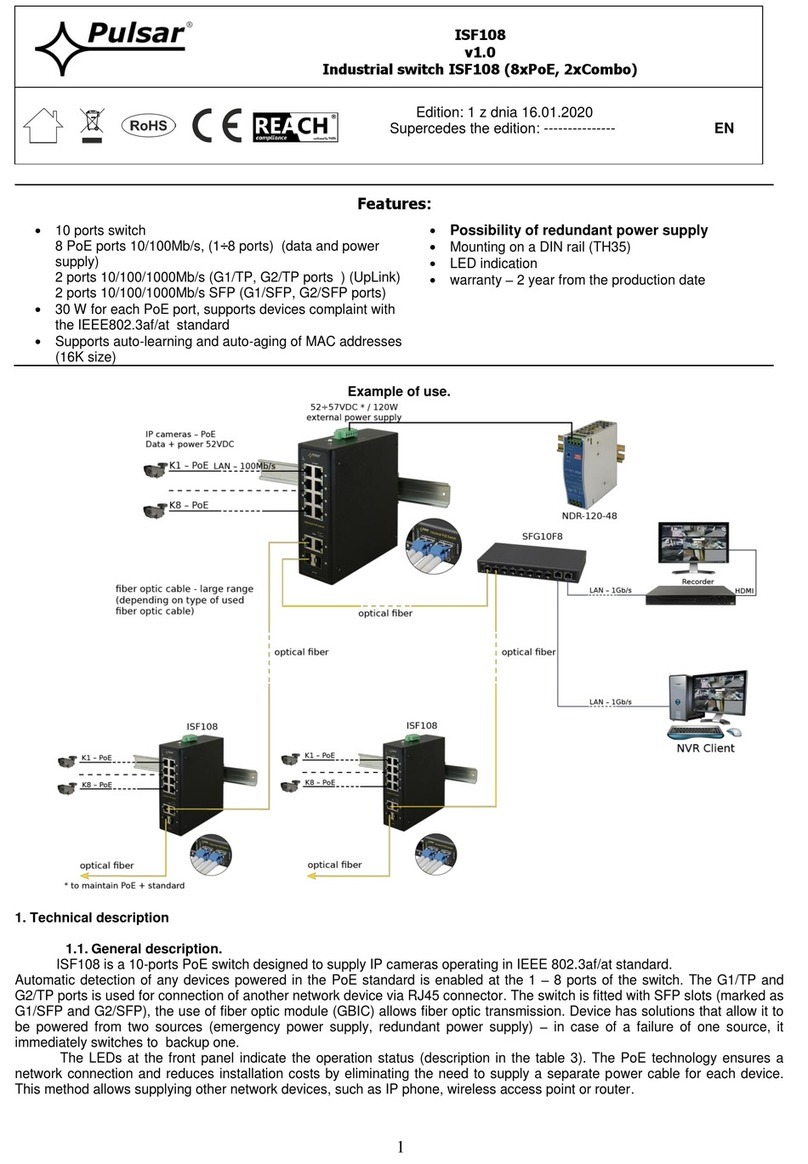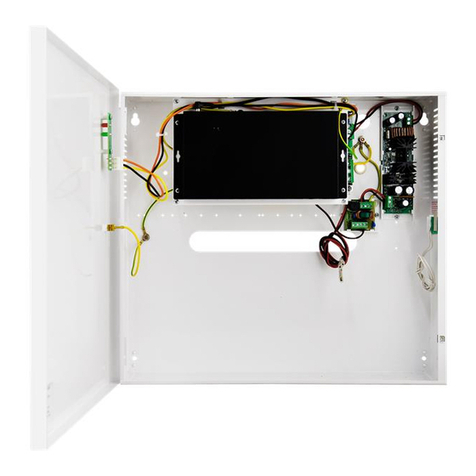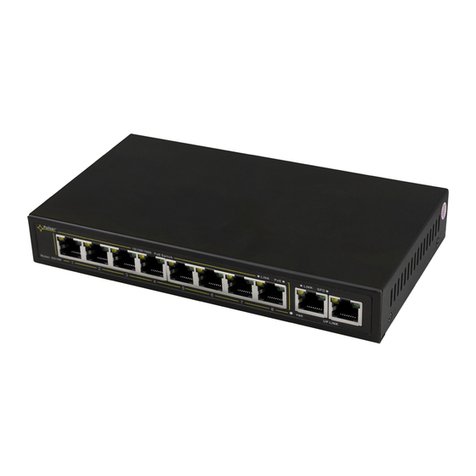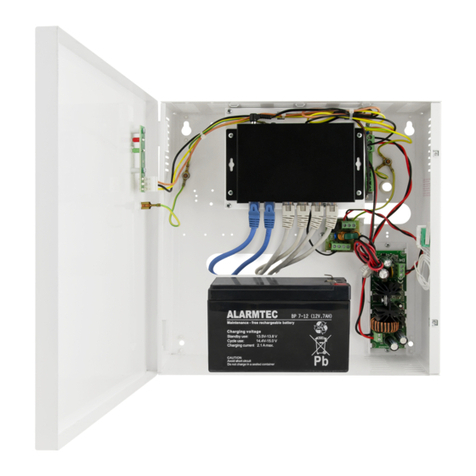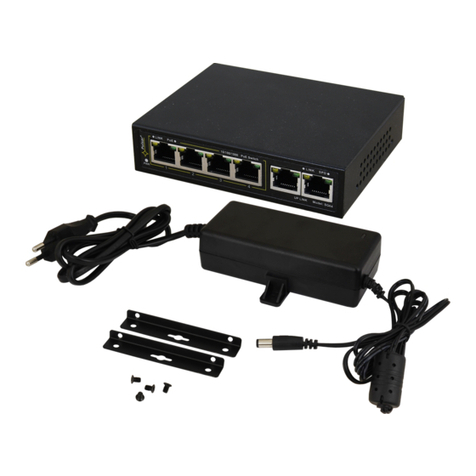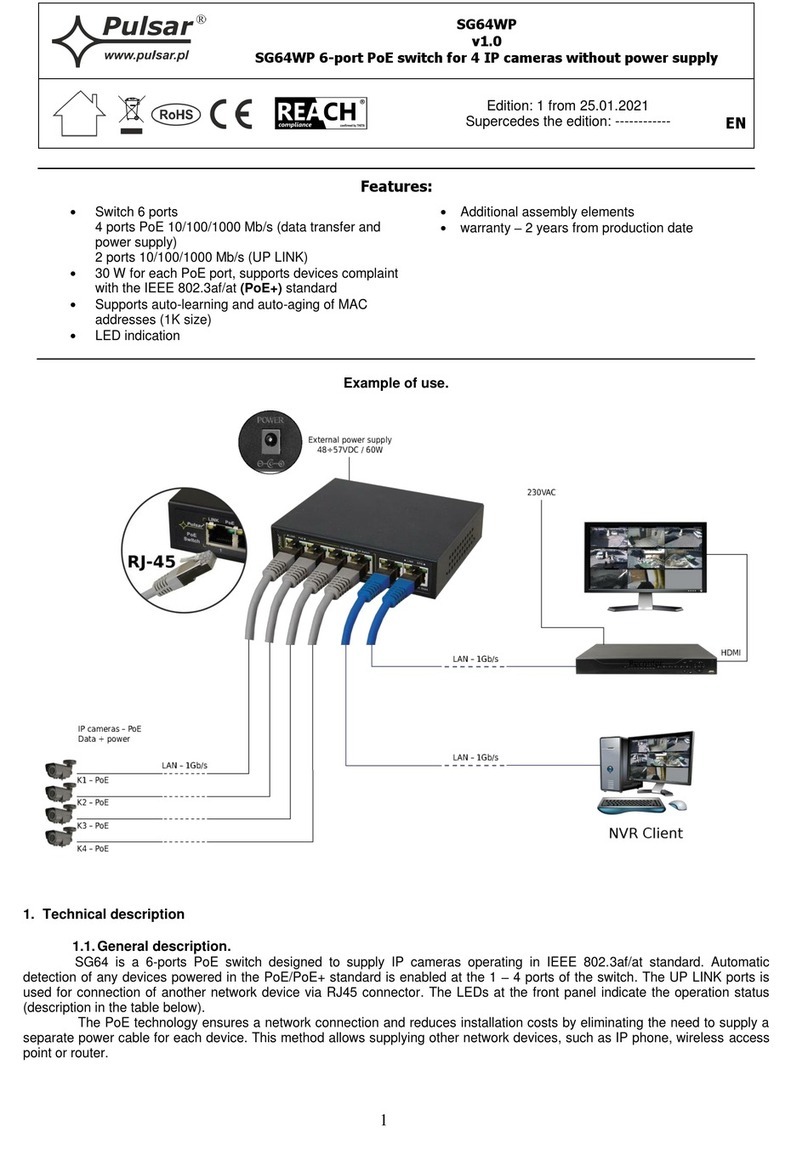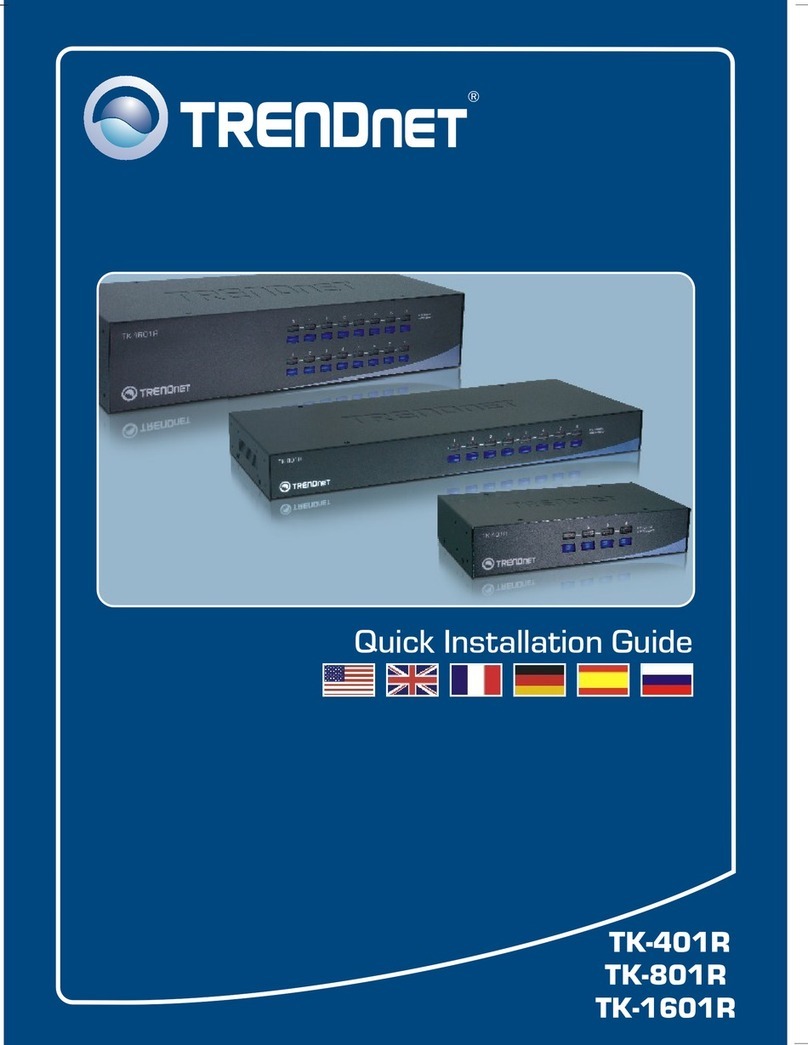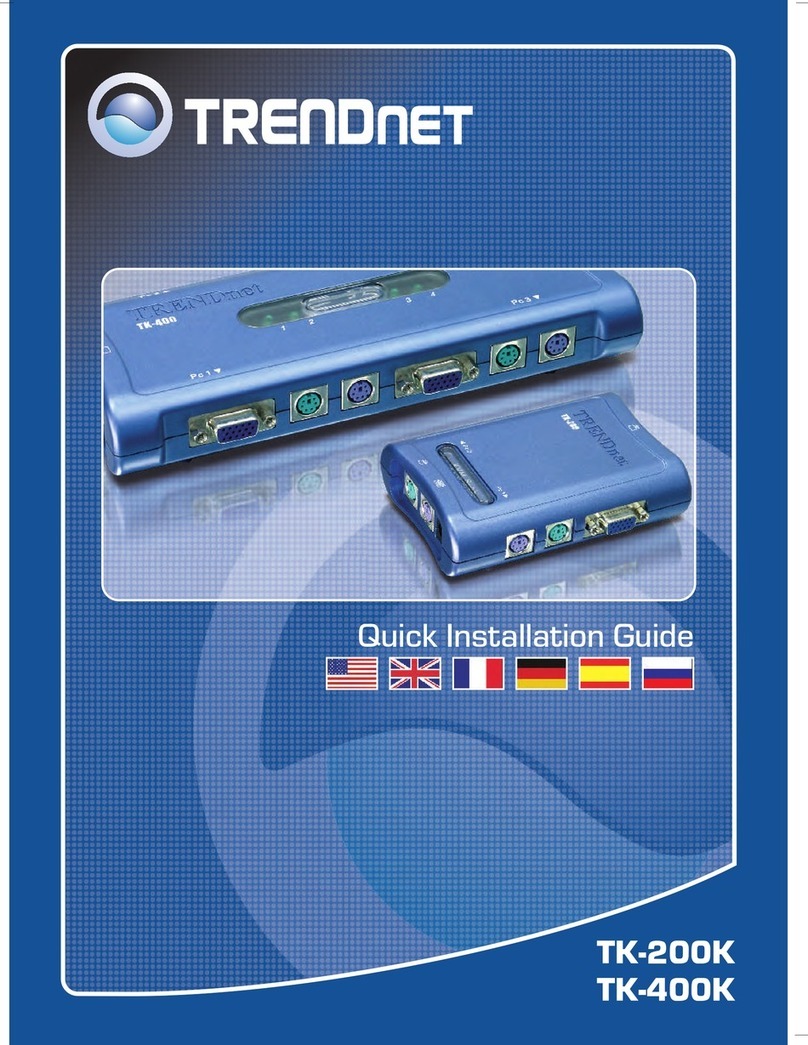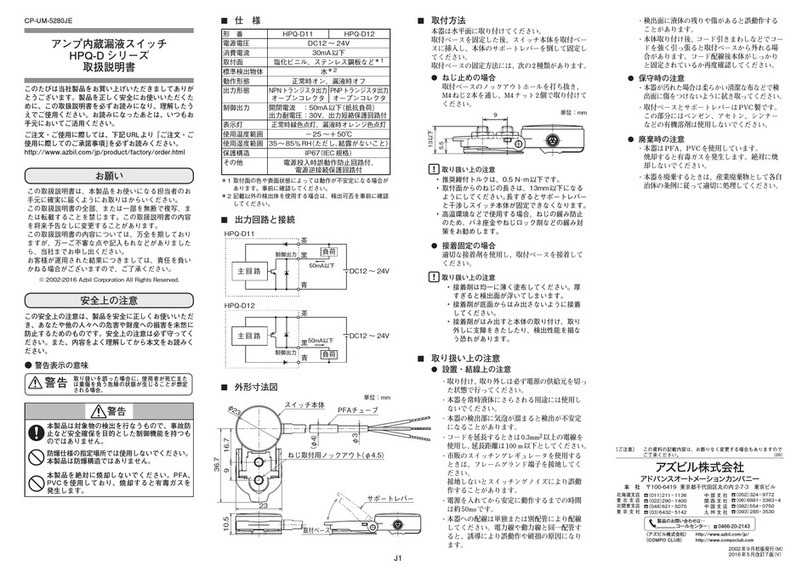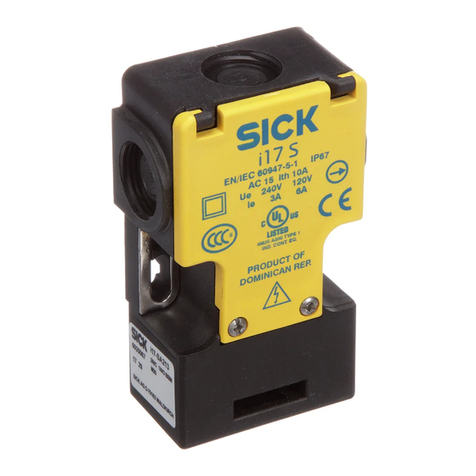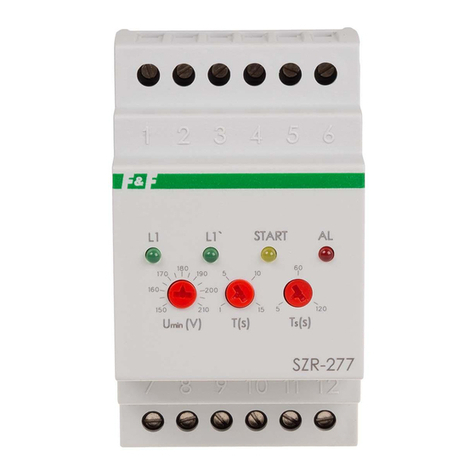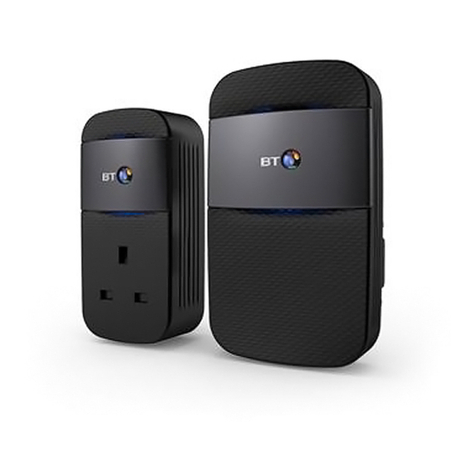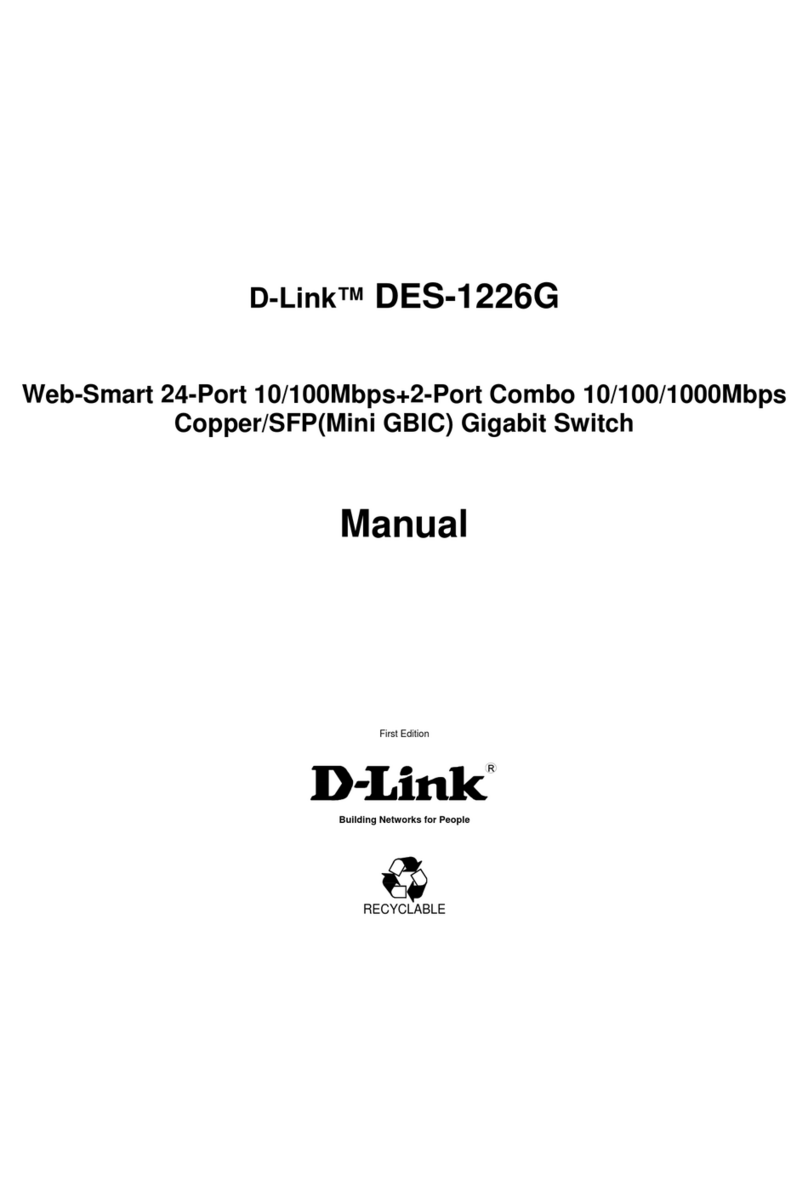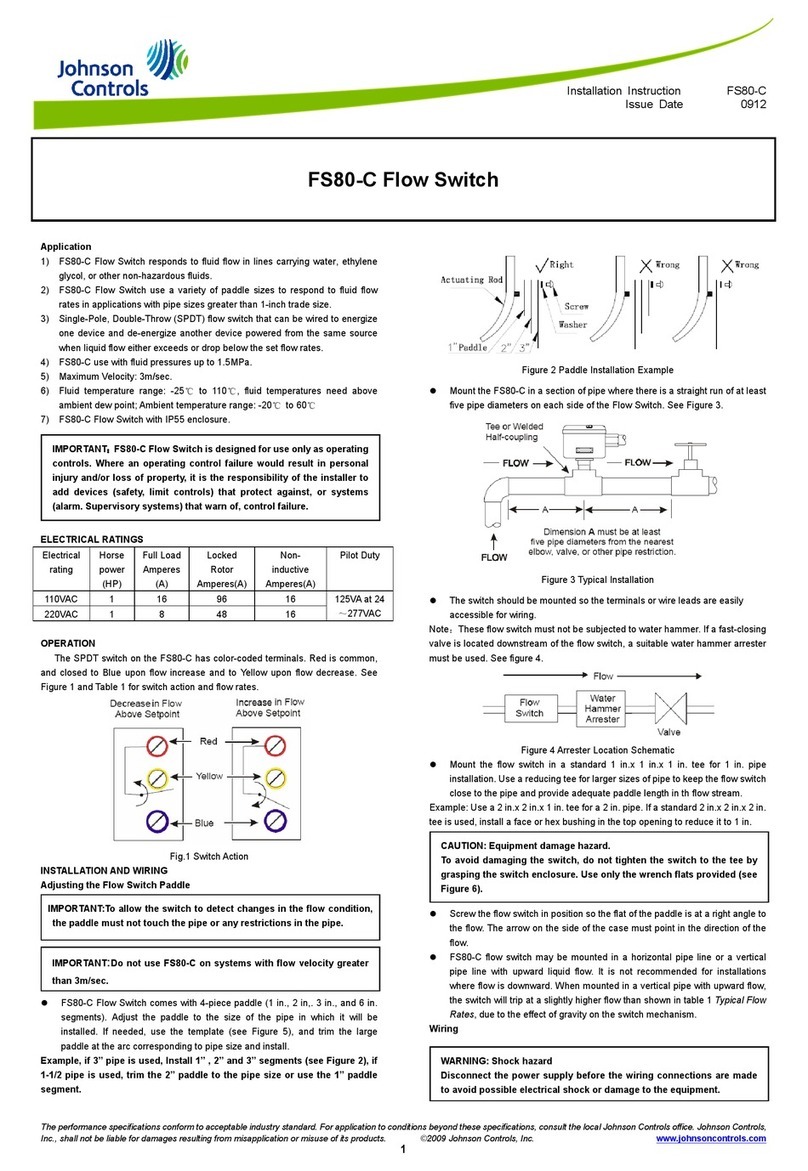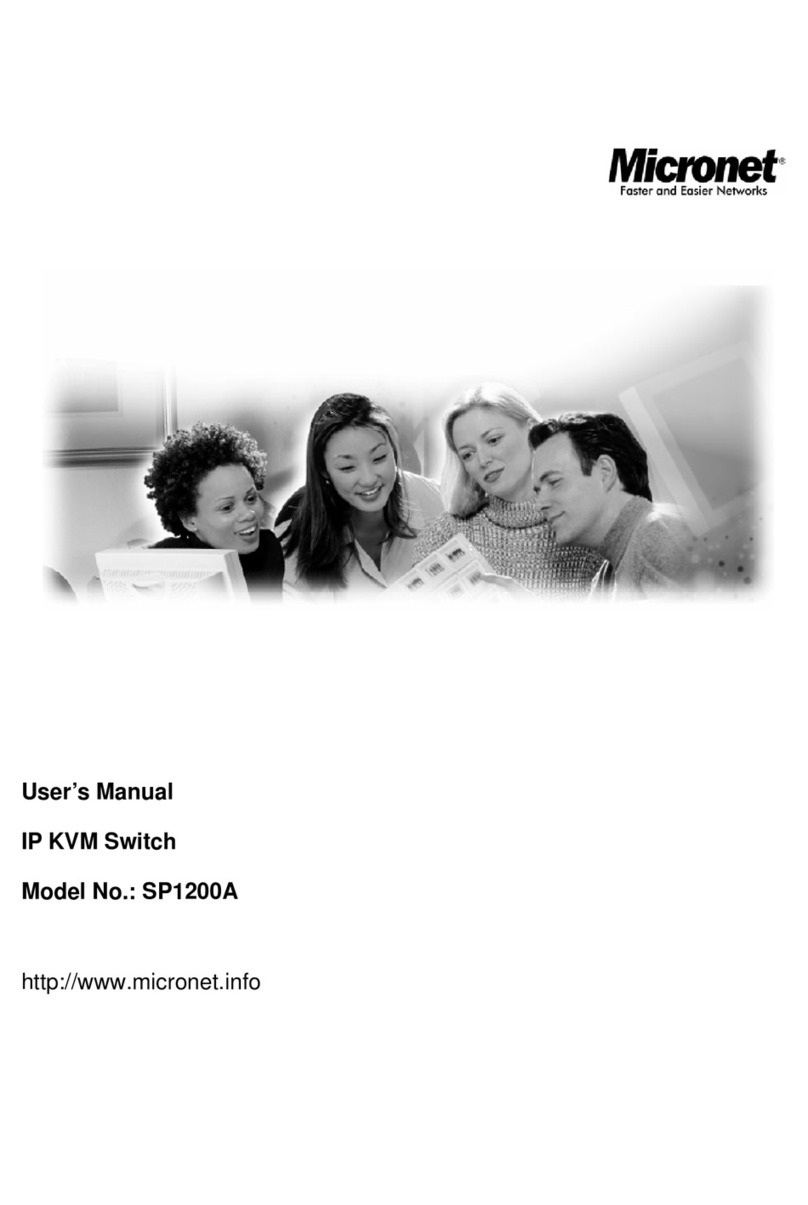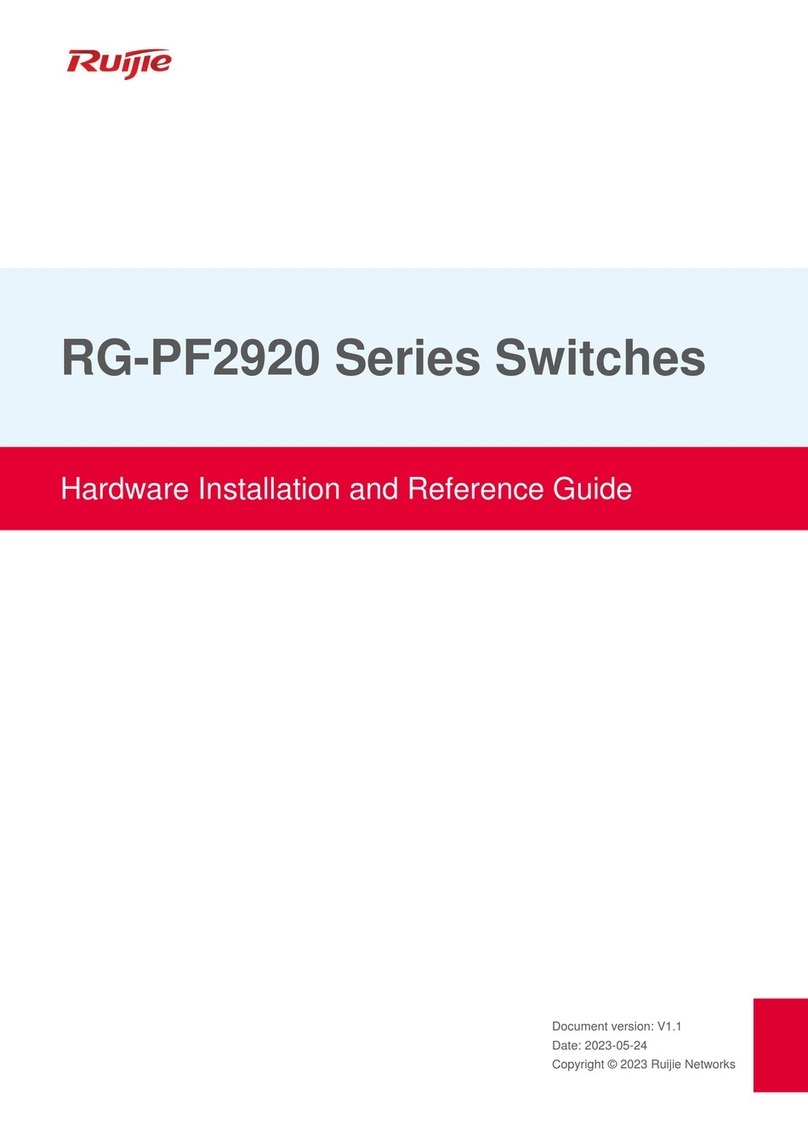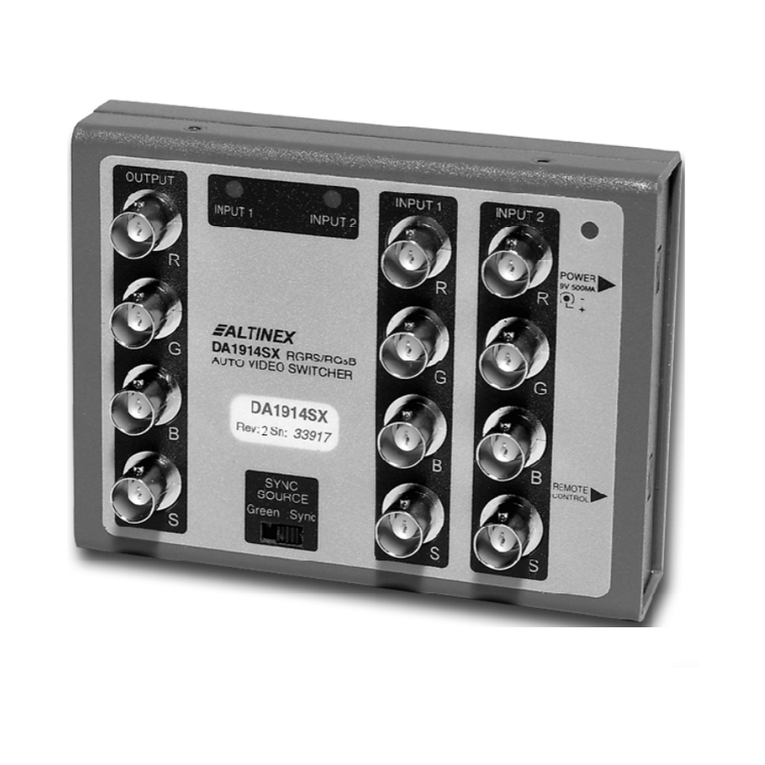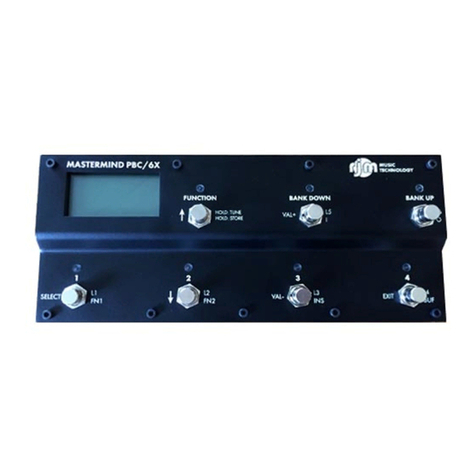
2. Installation
2.1. Requirements
Unit should be mounted in confined spaces with normal relative humidity (RH=90% maximum, without condensing) and
temperature from -10°C to +40°C. Ensure the free flow of air around the unit. The PSU shall work in a vertical position that
guarantees sufficient convectional air-flow through ventilating holes of the enclosure.
The switch load balance should be done before installation. The given value of 30 W per port is the maximum value
referring to a single output. The total power consumption should not exceed 160 W when all PoE ports are being used.
The increased demand for power is particularly evident in the case of cameras with heaters or infrared illuminators - when
launching these features, the power consumption increases rapidly, which may adversely affect the operation of the switch. As
the device is designed for a continuous operation and is not equipped with a power-switch, therefore an appropriate overload
protection in the power supply circuit should be provided. The electrical system shall be made in accordance with applicable
standards and regulations.
2.2. Long Range mode
Switch enables operation in two modes: standard and extended range. When the Long Range switch is in STANDARD
position (see Fig. 5), PoE ports operate at 100 Mb / s up to 100 meters. After switching to EXTEND position at the 9÷16 ports,
range is increased to 250 meters and speed is reduced to 10 Mb / s. In both modes, the UpLink port speed is 1000 Mb / s.
Note: Changing the modes requires a power restart!
2.3. Installation procedure
1. Connect the 230 V power supply and turn on the device. The connection should be made with the supplied 3-core
cable with a plug. The place and method of installation of the switch should ensure free air flow around the unit.
2. Connect the camera wires to the RJ45 connectors (sockets RJ45 from 1 to 16).
3. Connect the remaining LAN devices to RJ45 (G1 and G2).
4. Check the optical indication of switch operation (see Table 3).
Connection schemes


